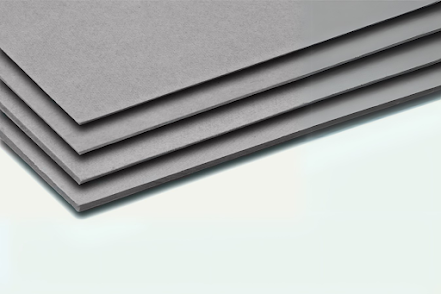The Best File Board Options for High-Quality File Folders
Introduction
When it comes to office items, file folders are more than
just a product to store paper. They are organization, consistency and, dare I
say it, professionalism. And the material you use to create file folders, the File Board
itself, can have some degree of impact on the overall appearance, intended use,
and functionality of the folders during their lifecycle. When you think about
supply boards for corporate office, school, or home office organization, the
material of the boards that provide folders with their strength and hold
becomes critical to consider with regard to their function and appearance
overtime and through use.
In this guide, we will cover the best choices in Files
Boards, the options and benefits of the boards, and what to consider prior to
making your purchase. We will also have
something to say regarding supplier selection, and the consideration of
particular boards and their significance for the file folders lifecycle.
What is File Board?
These boards are a durable, rigid paper material developed
solely for use in file folders, document covers, and other stationery products.
The thickness, weight, and finish give them a formal, long-lasting appearance
for everyday use. File Board can come in a wide range of GSM (grams per square
meter) depending on its application, from lightweight options to heavy-duty
grades.
Why Material Choice Matters for File Folders
When selecting file folders, many users overlook the
importance of the board quality. The board material can deflect, warp or lose
shape quickly, cheapening the product, and reducing its life expectancy. A good
Quality File Board will withstand wear, such as a full submittal to a
regulatory authority, and hold its shape under weight, printing/embossing, etc.
Types of Boards for High-Quality Folders
Standard Board
This material is ideal for everyday office purposes. It is
generally lighter in weight but strong enough to hold documents without
excessive bending.
Heavy-Duty Board
This board offers greater resistance to bending and more
puncture resistance than the lighter weight board: it is ideal for long-term
storage, legal, and archival documents.
Colored and Textured Board
This board is designed for presentation folders or meet your
brand identity; the colored and texture add value while providing the same
functionality as the heavy-duty board.
Eco-Friendly Board
This is made from recycled fibers and/or has a recycled
coating, it contributes to sustainability goals; Here you are also removing
harmful inputs and while still keeping strength, is based on performance we may
compromise just a little bit.
Factors to Consider When Choosing File Board
Thickness & GSM
Determination of the right GSM depends on your intended
usage. Everyday office folders could be 250-350 GSM while archival folders
could require 400-500 GSM for extra rigidity.
Surface Finish
Finish types available include matte, gloss and laminated.
The gloss of laminate can help deter damage and offer a more appealing look and
feel. A matte finish will, of course, reduce glares, whereas gloss is beautiful
and vibrant.
Supplier Reliability
Having a steady source will assure quality control. Look for
suppliers with certifications for quality and sustainability, if possible.
Benefits of Quality File Board
- Resilient: Will stand the test of wear, bending and tearing.
- Professional Look: Maintains its shape, and the look of its shape as it ages.
- Customizable: Great for printing, embossing, branding, etc.
- Good Compatibility: Works with economy and premium file folders.
- Sustainable choices: Lots of mills are producing file boards that are made from sustainable products.
Applications of File Board Beyond File Folders
While primarily used for file folders, File Board is also utilized for:
- Notebook covers
- Archival boxes
- Divider sheets
- Presentation kits
- Menu covers
How File Board Compares to Other Materials
Unlike plastic folders, which can crack over time, File
Board offers a balance of rigidity and flexibility. Compared to lightweight
paper, it lasts longer, supports more weight, and gives a premium feel.
FAQs
1. What gsm recommended to use for a heavy duty file folder?
For a heavy duty file folder, we recommend 400 - 500 gsm.
The thickness of the stock will not bend during handling and it has capacity to
store many documents on the inside.
2. Is it eco-friendly?
Yes, there are many suppliers that offer a choice of
recycled or FSC certified board that have the same strength as the standard
stock with the added benefit of being considerate of the environment. If you
are looking to cultivate an image of sustainability in your business, this is a
great product to choose.
3. What is the difference between File Board and chip board?
Chip board is another type of rigid paperboard, though it is
cheaper and manufactured from recycled paper pulp. File Board usually has a
smoother surface that will take better print, is more consistently density, and
is more suited to premium office stationery.
4. Can they be customized with branding?
Yes, logos can be added with print, textures, embossing, or
even a coating, depending on the finish you wish to achieve.
Conclusion
You might want to think about a substrate for your file
folders that will provide sustainability, a professional look and feel,
quality, and usability from a range of products whether you're looking
sustainable, heavy-duty or a high-end custom look. Quality board is a smart
choice regardless whether you're purchasing folders for work or presentation
samples, as some of our folders will look better overall no matter if its a
day-to-day office file, or special presentation folder. It's obvious regarding
your choice of a premium File Board when you consider the other substrates like
chip board -
your benefit in terms of presentation and quality matters. In terms of
quantity, it is imperative you can source a good supplier who can produce your
design with branded options.


Comments
Post a Comment